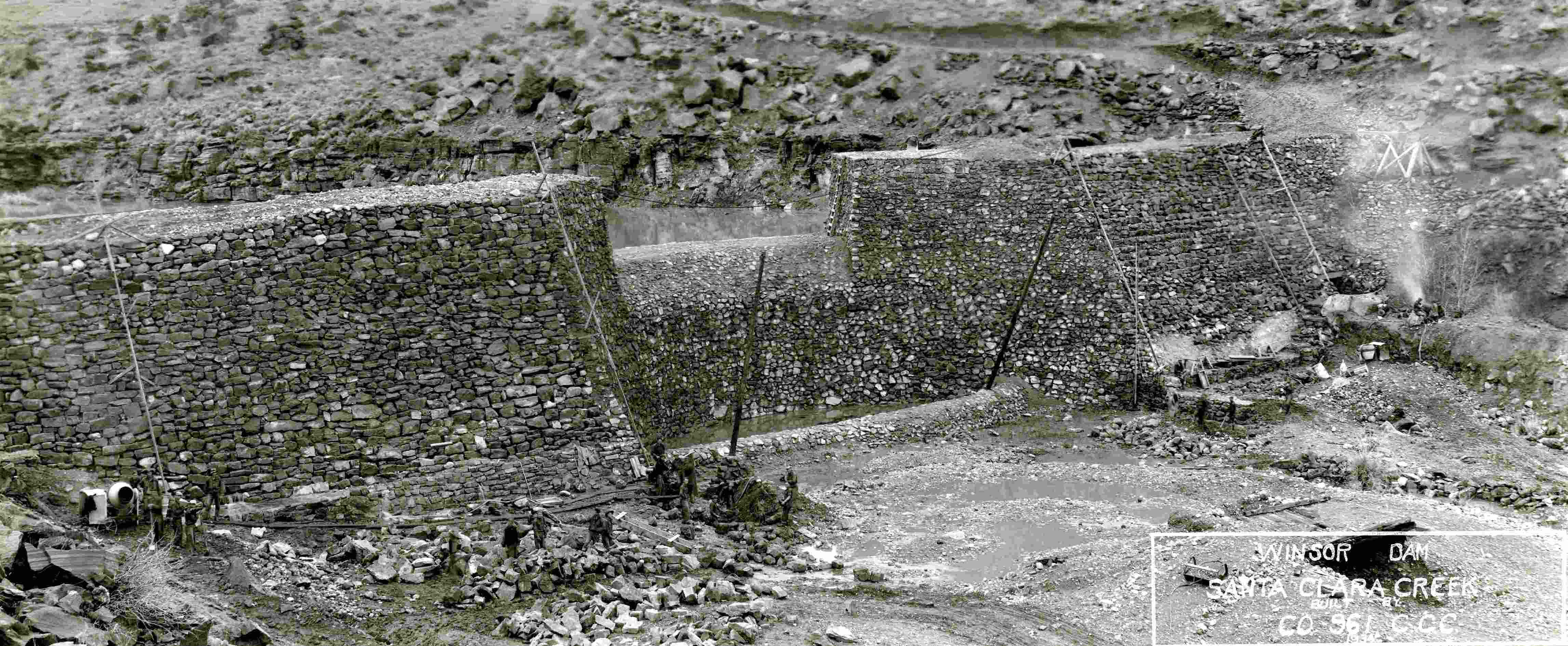
WASHINGTON COUNTY HISTORICAL SOCIETY (Washington County, Utah)
DESCRIPTION OF THE SHEM DAM
on the Santa Clara River/Creek
HISTORY
HAER No. UT-96, Pages 8-9A third description of the dam was written by an unidentified CCC enrollee of Company 961 and appeared in the second issue of the Camp PE-213 newsletter:
The first Erosion project of Company 961 was recently completed by the crew of men working under Forestry Thomas [i.e., Forest Service superintendent Tolton]. The Winsor Dam, on the Shivwits Indian reservation, is one of the largest Public Erosion projects in the Fort Douglas District [of the CCC].
Work on this project began in Oct. of 1933, and was discontinued in May of 1934, the work having shown rapid progress during the preceding months. The dam at this point was completed up to the spillway and facing of the front wall.
The Company was then moved to Panguitch Lake for the summer months, and when it returned to St. George in October of 1934, work was again resumed on the structure and it was completed about the middle of February, 1935.
The purpose of the dam, primarily, is not storage of water, but rather as a flood control measure.
The dam is 350 feet long, 84 feet thick at the base, and 20 feet thick at the top. The spillway is 60 feet in width. The walls extend 15 feet above the creek bed, making a total height of 38 feet. The project contains 45,000 cubic yards of building material, for the best part sandstone and lava rock hauled down from the surrounding hills.
The damn dam, as it was often referred to, is completed, and we of 961 feel proud of our work. One of the most outstanding phases of the project was the fact that so few serious injuries were incurred by the laborers. Nothing more serious than the loss of a fingernail or the acquiring of a scar on an arm or leg.
“The Winsor Dam,” Cactus Chronicle 1, no. 2 (March 14, 1935), 1. Civilian Conservation Corps Newsletters Collection, 1935–1941, Utah State Historical Society, Salt Lake City. Minor spelling errors have been corrected.
REFERENCES
Historic American Engineering Record, Shem Dam (Winsor Dam), HAER No. UT-96Prepared by Scott O'Mack, William Self Associates, Inc.,
for the USDA Natural Resources Conservation Service (NRCS)
March 2016, 96 Pages (see pp. 8-9)
[Large file, so this may take a while to load]